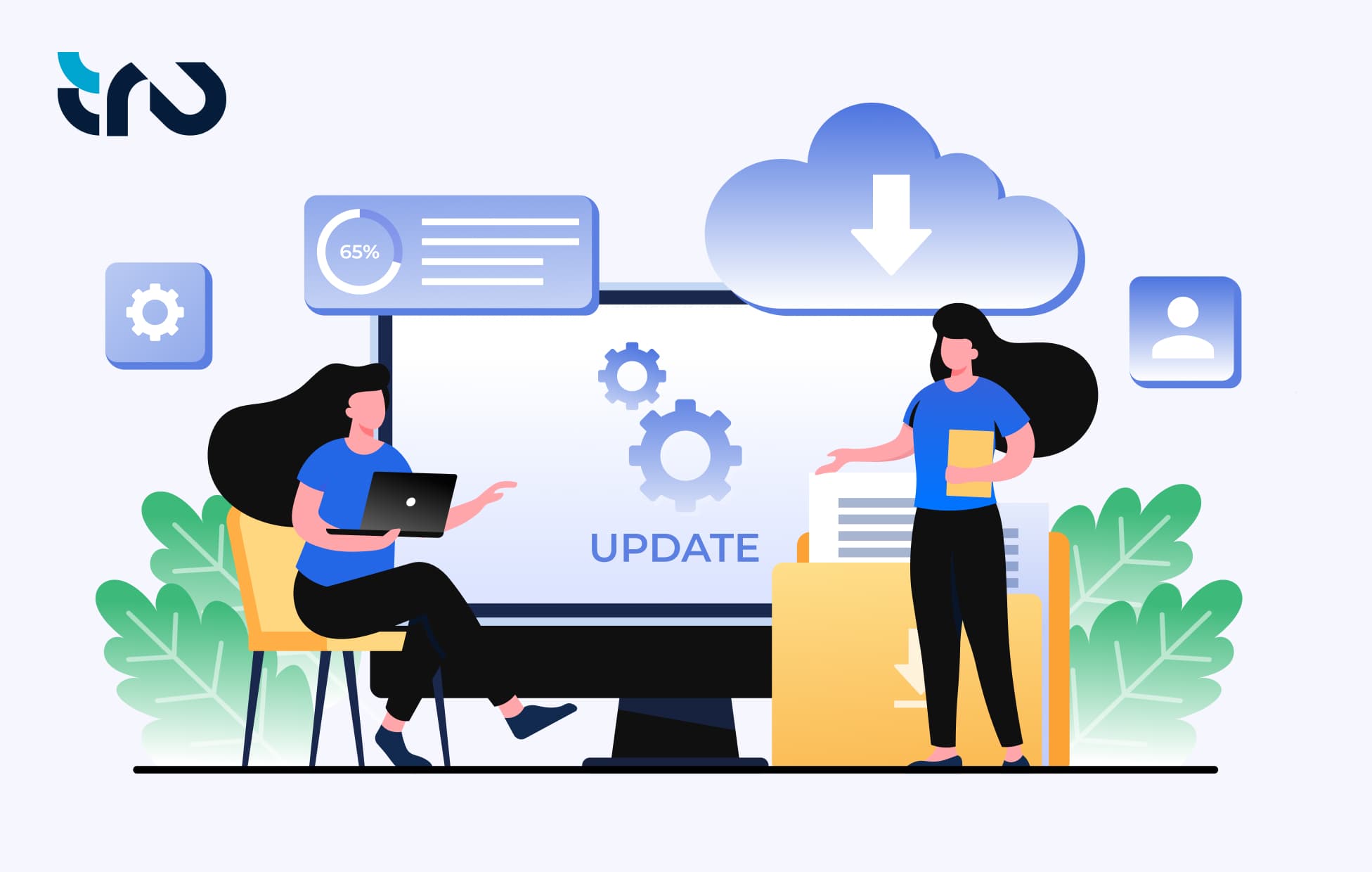Customer behavior in 2025 is totally unpredictable. One moment they're on your website checking product details, adding it to the cart, heading to checkout, about to pay, and boom! They see an ad with a better deal, and buy the same product from another store’s website.
Imagine! The customer was literally on your website for 10 minutes, yet converted on another website in less than a minute. Scary, right?
A report by Baymard Institute stated that 70.19% of online shopping carts are abandoned before the checkout is completed. This is a clear sign of how easily you lose customers these days. Website migration, when done right, helps you keep up with innovation and meet evolving customer expectations, allowing your website to convert better. However, if done unplanned, it may cost you your SEO, traffic, sales, and loyal customers.
This blog is an insightful guide on how to strategically migrate your retail website without compromising sales or SERP rankings.
Why Retail Website Migration Is a High-Stakes Move in 2025
A survey by Deloitte found that 67% of online store owners are prioritizing platform modernization to overcome the challenges of outdated systems. On the other hand, many brands today are also migrating to improve UX, boost site speed, enable AI features, and meet growing customer demands.
In 2025, shoppers expect fast, personalized, and seamless experiences across devices. The rise of AI-driven search and constant SEO changes further highlight why staying ahead is essential.
A poorly planned migration can cause:
Traffic loss from broken links or missed redirects
Revenue dips from downtime or checkout issues
SEO drops from URL or content mismatches
Customer confusion due to design or navigation changes
No matter the reason behind it, whether it is replatforming, rebranding, or scaling, every retail website migration has a common goal: to evolve without losing customer trust or business momentum.
Still using outdated tech? This Grocery Store SEO guide shows how even niche retailers are upgrading for better speed and structure.
Retail Website Migration v/s. Retail Site Redesign
Retailers often confuse website migration with site redesign and make costly mistakes. While both improve your digital presence, migration and redesign serve different purposes and involve very different levels of technical change.
Retail Website Migration
A website migration involves moving your website to a new platform or architecture. It affects core systems like URLs, databases, hosting, and SEO structure.
Retail Site Redesign
A website redesign focuses on visual updates like layout, branding, and user interface without changing the platform or underlying structure.
Comparison Table: Retail Website Migration v/s Retail Site Redesign
Feature | Website Migration | Website Redesign |
Purpose | Platform switch, backend change, SEO structure | Visual refresh, UI/UX improvements |
Inclusion | Hosting, database, URL structure, redirects | Fonts, colors, layout, images |
SEO Impact | High — needs careful handling | Low to moderate |
Tech Involvement | High-level — developers, SEO experts, QA teams | Moderate — design and frontend teams |
Risk Level | High if poorly executed | Low to moderate |
Common Triggers | Platform limits, performance issues, SEO needs | Brand update, outdated design, and UX flaws |
Timeline & Cost | Longer and more costly | Shorter and more budget-friendly |
When to Choose What
Choose Website Migration if you're switching platforms, changing site architecture, or doing a full SEO overhaul.
Choose Website Redesign if you're updating brand visuals, improving user experience, or refreshing your site's look and feel.
How Website Migration Can Make or Break Your Retail Success
Website migration is not a mere technical update but a whole business-critical move.
If done strategically, it boosts your website’s speed, SERP rankings, and offers a personalized, exclusive experience to customers. The result is a dynamic website with a significant increase in traffic conversions and brand trust. If done wrong, it can cause severe revenue loss, SEO crashes, and customer drop-offs.
Let Tru Handle Your Website Migration the Right Way!
Contact UsStep-by-Step Website Migration Strategy for Retailers
A successful retail website migration hinges on precision, preparation, and performance alignment. While short-term SEO dips are common, a well-planned migration ensures minimal setbacks and maximizes long-term performance. Here's the right step-by-step approach for retail leaders:
1. Define Strategic Objectives Early
Before starting anything, define your intent and goals. Are you replatforming for performance, redesigning for UX, or restructuring for SEO gains? Whether it’s an increase in load times, improved rankings, or mobile conversions, quantify your goal (e.g., 15% faster mobile checkout or 10% uplift in organic traffic) and align all teams to it.
2. Secure Cross-Functional Alignment
Website migrations must not be confused with IT projects. Bring in SEO experts, content teams, UX designers, DevOps, analysts, and brand leads for proper alignment. Early collaboration surfaces risks, prevents silos, and ensures the new site supports both backend and customer-facing goals.
3. Benchmark and Audit Existing Site Performance
Capture a full snapshot of your site, including top pages, keyword rankings, traffic drivers, crawl behavior, backlinks, and site speed. This would be useful post-migration as a benchmark to compare and help fix any unexpected performance issues.
4. Plan the Architecture and Redirect Logic
Build a detailed map of your new URL structure. Every critical page should have a clean 301 redirect from the old URL to maintain SEO value and prevent customer dead ends. Create a redirect matrix and test it thoroughly before launch.
5. Build, Stage, and Stress Test
Develop your migrated site in a secure staging environment. Conduct usability testing across devices, verify SEO tags, run accessibility audits, and ensure core features like checkout and product search function seamlessly. A full QA cycle avoids post-launch surprises.
6. Launch Smart and During Off-Peak Hours
Schedule your go-live during low-traffic periods. Freeze content updates 24–48 hours prior. Run final tests for robots.txt, sitemap accuracy, and analytics tags. Once live, monitor real-time metrics closely using tools like Google Search Console and Hotjar.
7. Track, Compare, and Optimize Post-Launch
After migration, track keyword positions, crawl rates, conversion paths, and bounce rates daily. Compare them to pre-launch benchmarks. Even minor issues like a missing canonical tag or incorrect redirect can cause ranking drops. Triage fast and prioritize UX continuity.
Replatform smarter. Power your migration with Tru’s Adobe Experience Cloud expertise.
How to Maintain Sales During Website Migration
Maintaining sales during e-commerce website migration is challenging but possible with precise execution and precautions. With the key strategies below, your site can undergo a smooth transition while ensuring your customer trust and checkout don’t suffer:
Avoid Downtime: Use a content delivery network (CDN) and schedule launches during low-traffic hours.
Communicate with Customers: Let users know about updates via banners, email, or social media.
Keep Key Pages Intact: Product pages, checkout flows, and bestsellers should be top priorities.
Use A/B Testing: Test versions of your new site against the old to ensure conversion rates are holding.
SEO Impact of Migrating a Retail Website and How to Avoid It
Statista reports that 68% of online experiences begin with a search engine. Thus, any impact on SEO will result in a huge loss of revenue. Google ranks pages based on content relevance and link value. If you change URLs, page structures, or metadata without care, your rankings will drop.
Avoid this by:
Maintaining URL slugs where possible
Using proper 301 redirects
Retaining page titles, meta descriptions, and header tags
Submitting updated XML sitemaps to search engines
Monitoring keyword positions daily for the first 30 days
Check out Tru’s reliable SEO & Organic Marketing Services and secure your SEO before you switch.
Migration Checklist for 2025 Retail Websites
Below is the ultimate website migration checklist you need. Ensure a successful migration of your site without compromising any sales and brand value.
Pre-Migration
Set clear migration goals (SEO, performance, UX, platform shift) and align all teams
Benchmark existing performance (traffic, keywords, speed, conversion rates)
Audit top-performing pages and backlink profiles
Create a full content inventory and backup
Plan a new site structure and create a redirect map
Freeze new content and code updates 48 hours before launch
Schedule launch during low-traffic hours
During Migration
Implement all 301 redirects carefully
Verify robots.txt and canonical tags
Test the XML sitemap and submit it to search engines
Check accessibility, mobile responsiveness, and page speed
Enable monitoring tools (Google Analytics, Search Console, heatmaps)
Post-Migration
Track keyword rankings and organic traffic daily
Monitor crawl errors, bounce rate, and session duration
Fix broken links or missing metadata fast
Compare performance against pre-migration benchmarks
Review the checkout flow and sales funnel for drop-offs
Optimize based on early signals and feedback
Case Study: A Successful Retail Website Migration
In 2023, Vans, the iconic American footwear brand, underwent a major website migration to enhance performance, user experience, and SEO visibility. The brand migrated to a new CMS while rethinking site architecture and URL structures. Recognizing the risks of traffic and ranking loss, Vans formed partnerships to plan a data-driven SEO strategy before launch.
The results were impressive:
Pageviews increased by 18%
Pages per session rose 44.3%
Session duration improved by 25.2%
Bounce rate dropped by 22.2%
By aligning SEO and development from the start, Vans not only protected its organic traffic but significantly improved user engagement.
Looking to future-proof your retail brand? Explore our Digital Transformation Services to modernize every touchpoint.
Post-Migration SEO Monitoring Plan
Conducting a post-migration analysis for SEO is just as important as the migration itself. Here’s a 4-step check to follow for at least the first 30 to 60 days after your website moves to a new platform:
Track daily keyword movements using tools like SEMrush or Ahrefs
Monitor 404 errors, crawl stats, and coverage in Google Search Console
Watch bounce rates, session time, and mobile traffic in Google Analytics
Review heatmaps and user behavior tools (like Hotjar or Microsoft Clarity) for UX signals
Final Thoughts: Turning Migration Risk Into Growth Opportunity
In this digital and fast-paced age, adopting innovation is crucial to survive. That is why top brands are often migrating their websites from one platform to another based on their business needs. However, many take this step without proper planning and run into costly, time-consuming problems.
Retail website migration doesn’t have to be a gamble. With the right strategy, planning, and monitoring, it becomes a powerful lever for better speed, stronger SEO, and a seamless shopping experience that meets the wants and needs of 2025’s customers.
Whether you're switching platforms, scaling globally, or reimagining your digital storefront, the key is execution without compromise.
At Tru, we specialize in high-impact retail migrations, from backend replatforming to full SEO-safe rollouts. Our cross-functional experts ensure you evolve without losing visibility, traffic, or conversions.



